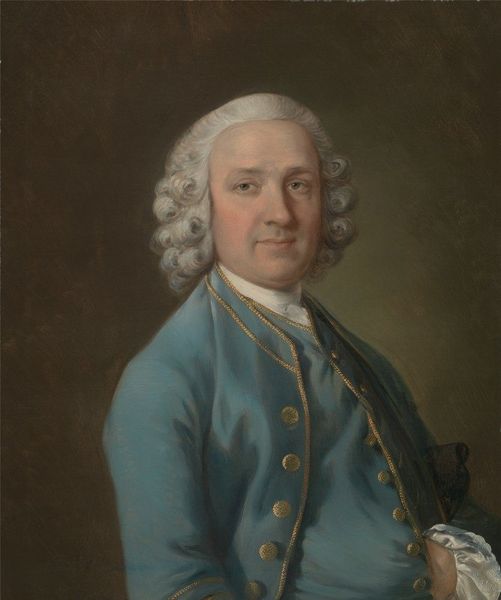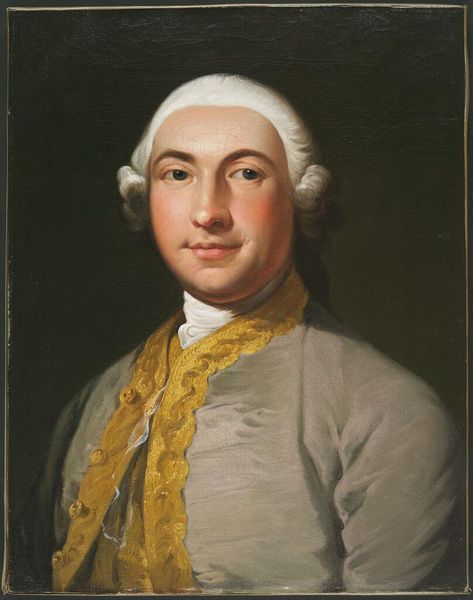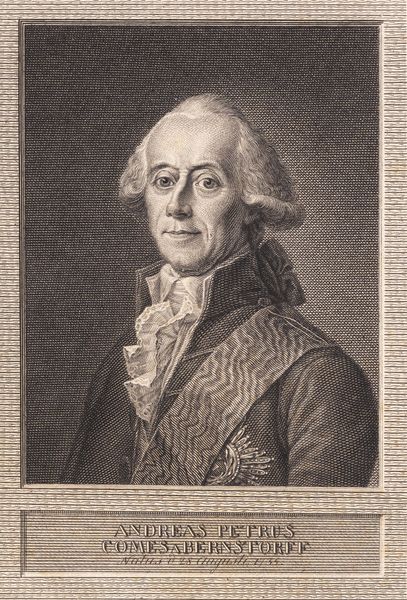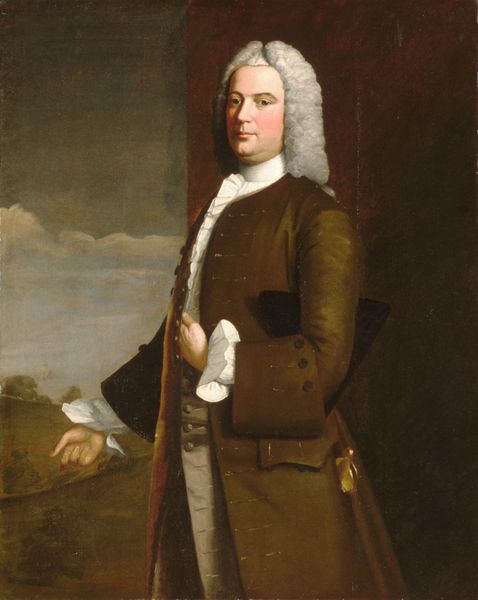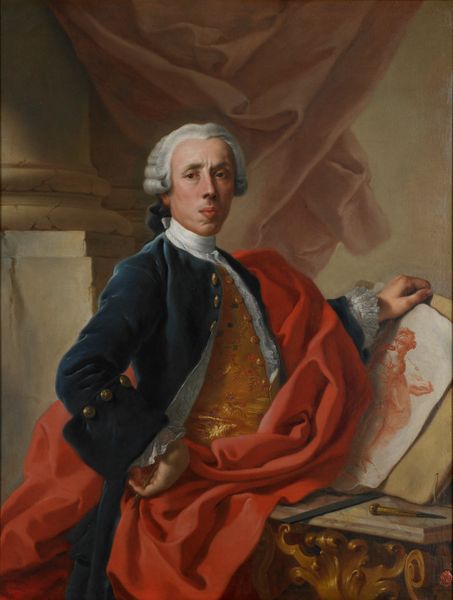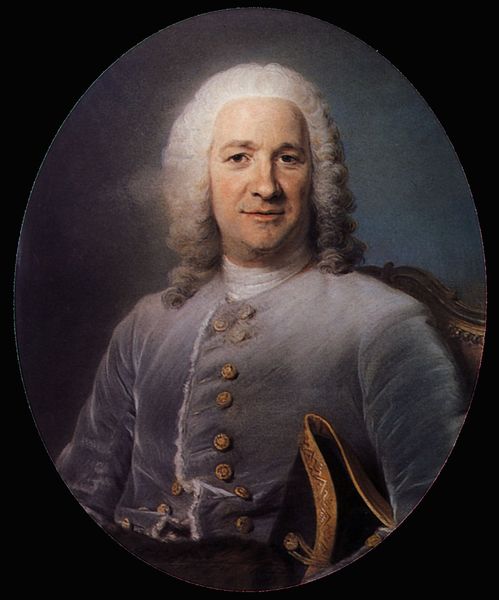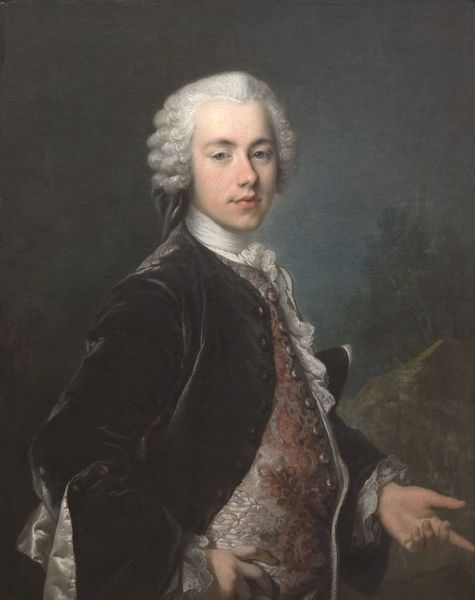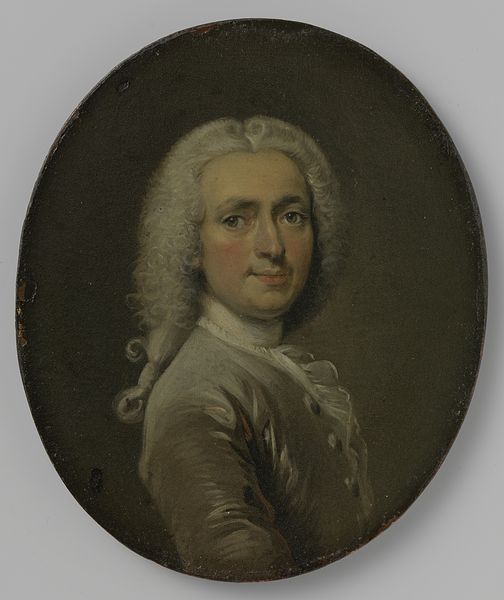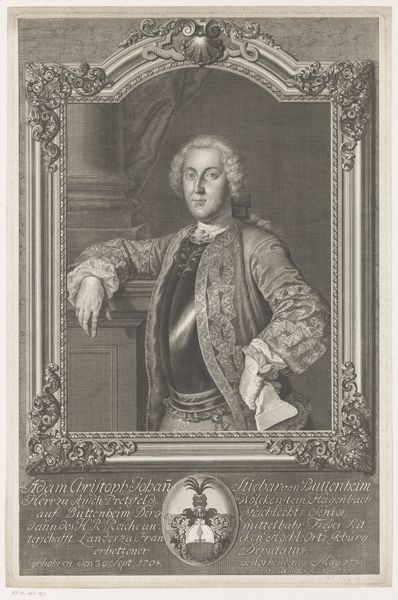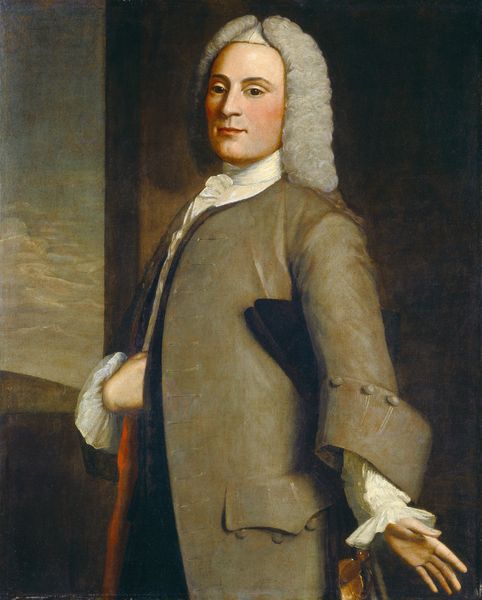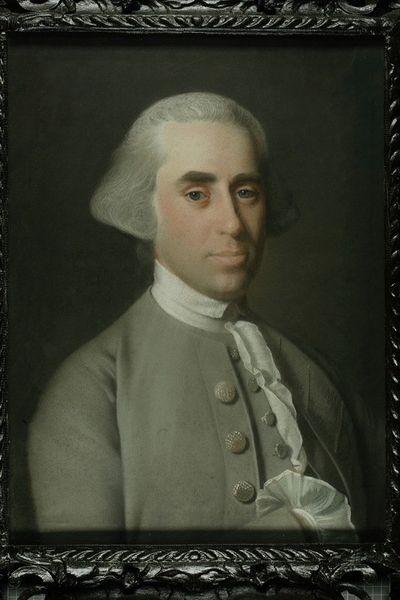
painting, oil-paint, oil-on-canvas
#
portrait
#
painting
#
oil-paint
#
oil painting
#
portrait reference
#
portrait head and shoulder
#
england
#
portrait drawing
#
genre-painting
#
facial portrait
#
oil-on-canvas
#
portrait art
#
fine art portrait
#
rococo
Dimensions: 36 × 27 15/16 in. (91.4 × 71 cm)
Copyright: Public Domain
Art Historian: Editor: Editor: Right in front of us we have "Freeman Flower", a painting realized in 1747 by Joseph Highmore. The medium is oil on canvas and the artist rendered what seems to be an upper-class gentleman. What I immediately pick up on is this sense of controlled elegance, a posture of confidence that the figure seems to exude effortlessly. What do you see when you look at this portrait? Art Historian: Indeed. What strikes me about this piece is the visual negotiation between individual identity and social performance that it presents. Consider, for example, the almost formulaic representation of wealth and status: the powdered wig, the luxurious fabrics, the leisurely pose suggesting a life of comfort and privilege. These were established visual cues that 18th-century viewers would have readily recognized and understood. But, how do you think a piece like this played into social commentary? Editor: Hmmm, you mean the political commentary, in Highmore’s time? Did it reinforce those social strata, or did it critique them somehow? I guess these commissioned portraits usually represent members of the privileged elite... but is Highmore doing something else? Art Historian: Precisely. Think about the burgeoning middle class in England during the 18th century. Portraiture became a means for them to assert their own social mobility and emulate the aristocracy. So, Highmore, as a successful portraitist catering to this clientele, was inevitably involved in this complex game of social signaling and aspiration. Do you find that the almost theatrical pose somehow diminishes the sense of true presence in the portrait? Editor: I see your point! So it becomes not just a likeness but almost like a performance, highlighting the constructed nature of social identity. Fascinating. Art Historian: Precisely! It makes you think about how art both reflects and shapes the socio-political landscape of its time. Editor: Thanks! I'm definitely going to view these portraits in museums differently from now on!
Comments
No comments
Be the first to comment and join the conversation on the ultimate creative platform.

